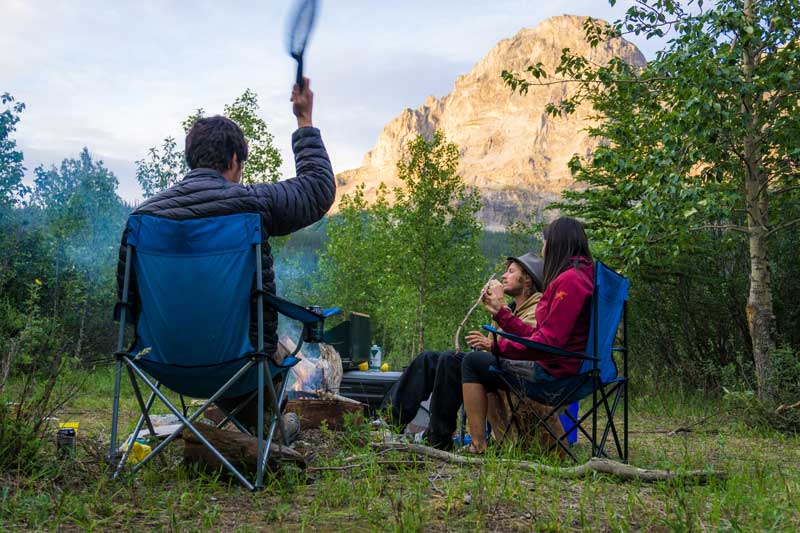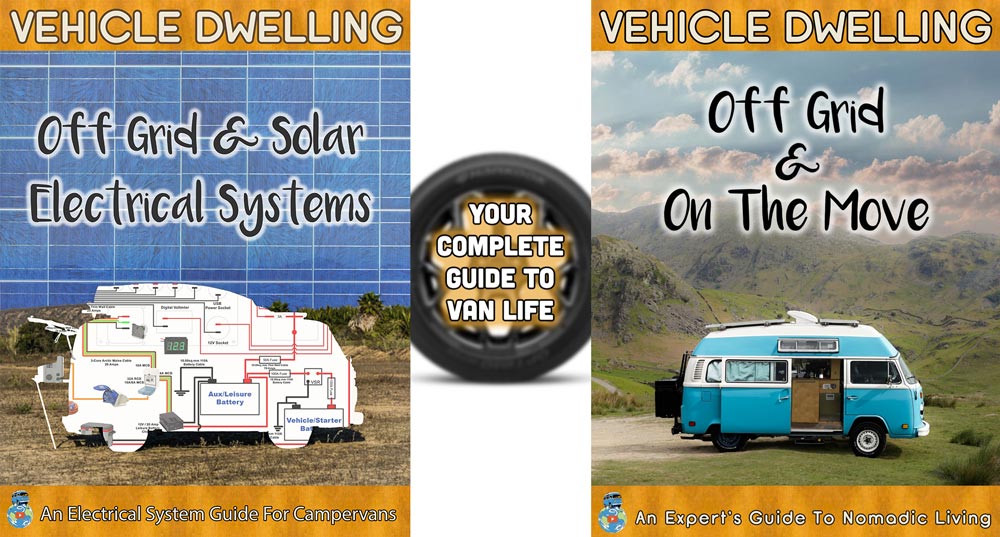How to Beat the Bugs (and still have a good time outdoors)
Mosquitoes, ‘no-see-ums’ (midges) and other biting insects can really affect your sanity and ultimately your ability to enjoy your time outdoors. You may think that they are just an annoying pest and that you can handle it, but mosquitoes kill a disturbing amount of people each year and now with the rise of the Zika virus, it’s as important as ever to have a solid strategy to keep you and your loved ones safe whilst you are out exploring and living the van life.
When we drove up the Alaska Highway and also the Road to The Arctic the bugs got really bad, so in this post we’re sharing the best tips that worked for us.

1- Stay Covered Up At Those Crucial Times
Everybody says it, cover up! It is the best strategy to keep the bugs from getting to your skin but not everyone likes to do it, especially if the weather is warm or you’re in a humid climate. We recommend light closely woven material and treating your clothing with a Permethrin spray for 100% effectiveness. Mozzies particularly like the ankle area, where you are most likely to be bitten and least likely to see them, so getting a pair of good hiking socks with in-built insect repellent properties is a great idea. It’s especially important to protect yourself during the hours of dusk and dawn when mosquitoes are most active (hungry).
If you’re somewhere really hot and simply must wear shorts you could can always keep a pair of bug pants handy for when the bugs get really bad. If you are going to the Arctic Circle or anywhere where the bugs are incessant, be sure to take a bug head net.
2 – Use the Best Bug Repellent on Exposed Skin
OK, look if you really want the-best-100%-effective-melt-the-legs-off-of-those-sons-of-bitches repellent, you need DEET! Anything with at least 50% DEET will be effective on pretty much any biting insect you are likely to find on Earth. You can even get 100% DEET products, but let us be clear, THIS STUFF IS NOT GOOD FOR YOUR SKIN! A bottle of this once split on our leather journal and it melted it’s way through the leather. We use it only in the most extreme situations. For an effective non DEET product Sawyers is effective which contains 20% Picaridin.
Natural Essential Oil remedies aren’t as harsh as the above mentioned products and are great for use on delicate and young skin.


3 – Get a Mosquito Racket…Get EVEN!

If the bugs get really bad you’re going to want to almost constantly wave them away from your face. Waving is much more fun when accompanied by a satisfying ZAP!
Make sure you get a rechargeable mosquito racket

Mosquitoes will affect your pets sanity too!
4 – Always Smoke at Base Camp
If you can, build a fire, if you can’t burn a tiki torch with citronella fuel.
Citronella Candles are also useful and much more effective than the outdoor repellent sticks, neither of these options should be used indoors as both generate a lot more smoke than a regular candle.
It’s also worth noting that these candles and the essential oils mentioned above can be harmful to pets if ingested. However, if used in a well ventilated space they are considered safe to burn.
For indoor use the tried and tested mosquito coils are quite effective and certainly reduce the number of bugs attempting to enter your space. These are considered non-toxic for pets.
5 – ZAP PATROL!
If you are around a AC power supply you can (and probably should) have a semi-permanent bug zapper doing the work for you. These devices attract the bugs and take care of them on your behalf so you can concentrate on chill-axing.
The majority of the larger units are designed to use indoors, or under cover, so be sure to check the details carefully as many of the options available are not best suited to outdoor living.
For Van Life and RVers, consider getting a portable bug zapper that is USB rechargeable so that you can still have an effective unit whilst Boondocking Off Grid
2 in 1 Bug Zapper and Lantern
USB Rechargable
Ideal For Mobile Living
See Prices on Amazon
6 – Sleep Well Despite The Bugs
To be honest with you, the vast majority of people living out of vehicles tend to try to keep the bugs out of their homes by having fly screens on the doors and windows. The problem with this approach is that at least some bugs will still enter your mobile home, through the air vents or cracks that you didn’t even know you had. For this reason we think it’s a good idea that everyone has a bug net over their bed so you don’t have that annoying experience of a mosquito buzzing in your ear in the middle of the night. We’ve all been there!
This is the cheapest and most effective net we’ve used. It can be adapted to any sleeping quarters and can be removed when not needed. If you are installing a bed net in a campervan, you should look to use the square kind of mosquito net, rather than the ring kind. This style will hang better in a small enclosed space like a van or RV and will keep the sides from encroaching into the middle of the bed. Often when you are traveling you don’t know just how bad the bugs are until you’ve stopped and started to set up camp. Bugs will home-in on your location, the longer you are at camp, the more that will arrive. It’s nice to have a way to at least get some rest from the bugs whilst you are in bed. This net is the way to do that.
IMPORTANT – Not all nets are made equally. If you think you are going to be in an area with no-see-ums, you need a higher quality netting. A standard mosquito net will not be sufficient!
Be sure to look at the number of hole per square inch, 500+ netting will a little more pricey but they will be sure to keep out all of the no-see-ums as well as the mosquitoes. Here is an example of high-quality no-see-um netting






















